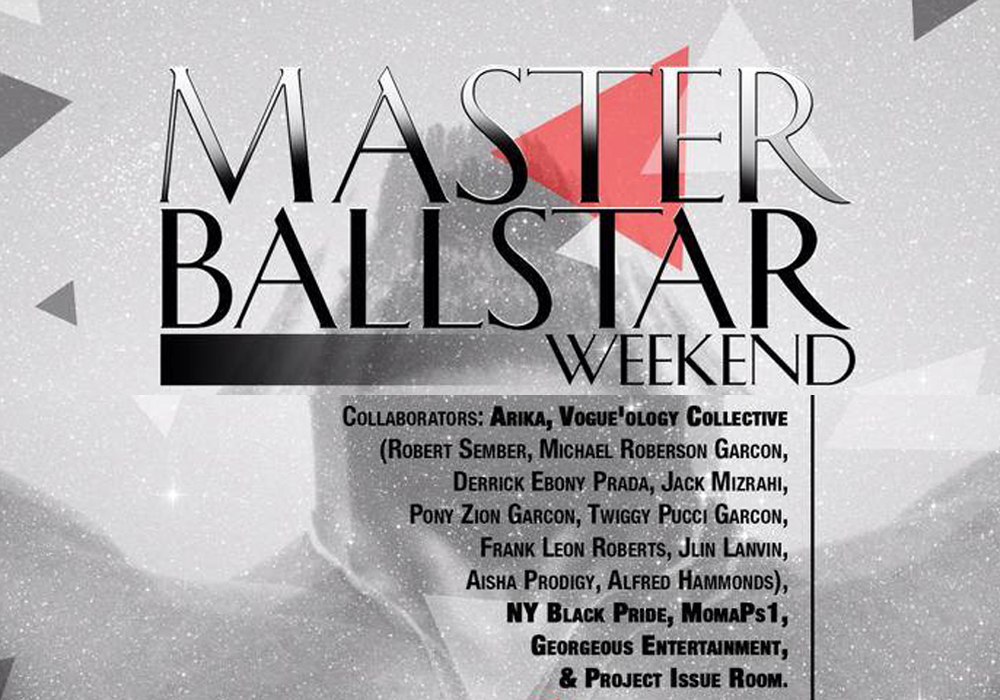
Master Ballstar Weekend
Master Ballstar Weekend was a series of events that emerged from a multi-year investigation undertaken by the Vogue’ology collective, which includes members of New York City’s house and Ballroom scene, the sound-art collective Ultra-red and the Scottish political arts organisation Arika. Vogue’ology is grounded in the Ballroom scene’s history of autonomous, self-organised struggle and a shared investment in collective art practices. Among the collective’s concerns is how the history of the Ballroom scene intersects with the multiple and often divergent struggles for freedom. This question guided the performance of five protocols for listening to the sound of freedom undertaken at the 2012 Whitney Biennial by Arika, Ultra-red and Vogue’ology, which was our first collaboration together, and sowed the seeds and initiated the themes of this project. The Facebook page for the events is here.
Master Ballstar Weekend was a collaboration between Vogue’ology Collective, Ultra-red, NYC Black Pride, MoMA PS1, Gorgeous Entertainment, Vera List Centre for Art and Politics, Issue Project Room, The New School, Destination Tomorrow and Arika. Vogue’ology members for this project include Michael Roberson, Derek Ebony Prada, Jack Mizrahi, Pony Zion, Twiggy Pucci Garcon, Frank Leon Roberts, J’Lin Lanvin, Aisha Prodigy, Alfred Hammonds, Robert Sember, Sean Ebony and Anika Gibbons.
ReadBackground written by Vogue’ology, Ultra-red and Arika 2014
Transgender, lesbian, bisexual and gay African-American men and women must overcome complex challenges to establish and secure welcoming and nourishing communities. While they may already be connected with multiple social groups, their membership in these groups is almost always conditional and tenuous. This constant marginalization sustains the community’s burdens of stigma, violence, housing insecurity, and HIV infection rates, which are estimated to be among the highest of any community in the U.S. One response to this marginalization has been the formation of self-sustaining social networks and cultural groups, such as the House Ballroom scene, an artistic collective and kinship system that has grown over the past 50 years into a formidable social movement for LGBT persons of colour.
The origins of the House | Ballroom scene are in the early 20thcentury “faerie balls” and cross-dressing pageants made popular during the Harlem Renaissance. The modern Ballroom scene, however, was established in 1968 in response to racism within New York’s LGBT community. In that year Crystal LaBeija, a star of New York City’s cross-dressing competitions/balls, broke publicly with the existing scene, which was organised and controlled by mostly white gay men, and established a separate ballroom circuit for black and Latino gay men, lesbians and transgendered persons. A year later Crystal formed the House of LaBeija, a team of black and Latino performers who competed in cross-dressing events. The rival House of Ebony, made up predominantly of black members, was formed a few months later. The names were intended to reference the conventions of haute couture, while the class conditions that actually defined the scene were the conditions of poverty, racism, homophobia and transphobia. In New York City the “houses” had to provide their members with a social network that responded to basic needs for shelter and security. Thus, they began to function like families and the leaders of the houses became known as “mothers” and “fathers”. Besides providing a support system for their members via an alternative kinship structure centred around ‘houses’ the other main structuring principle within the scene is the tradition of balls in which members of houses “walk” or compete against one another in the ball. They are judged on dance skills, costume, general appearance, and attitude. Participants dress according to category in which they are competing and are expected to display appropriate “realness”. The ball is thus a social site of experimentation and collectivity, of alterity and the construction of alternative ways of being. It draws on, adds to and inspires Black and Afro-Diasporic traditions of symbolic competition within and structuring of communities that can be linked to other artistic forms, e.g.: Hip-Hop battling or Jamaican MC culture. This is the Ballroom scene that exists today.
Since 2009 Arika and Ultra-red have worked together to explore the intersection between sound/music and political organising. This work includes underscoring the pedagogical function of aesthetic objects. That is, rather than being limited to representing struggle or idealized as the apex of creative work, aesthetic objects function as tools for collective learning and analysis, thereby expanding a community’s political literacy and strengthening its ability to act effectively against oppression. Our collaboration has taken many forms, including projects in Dundee, Glasgow and New York, and in 2012 five-days of intensive workshops at the 2012 Whitney Biennial focused on the question, “What is the Sound of Freedom?” The Whitney event was also a phase in Vogue’ology, a long-term collaboration between New York City’s House and Ballroom Scene and Ultra-red.
Vogue’ology was initiated in 2009 as a collaborative project to build greater political literacy within the community and to help organize autonomous processes to protect against homophobia, transphobia, racism, class oppression, and the HIV/AIDS crisis. It is inspired by the militant pedagogical traditions associated with the Civil Rights movement and anti-colonial and anti-imperial struggles. Vogue’ology places these practices in dialogue with the Ballroom scene’s multi-generational history of autonomous creative and social support strategies with the aim of addressing the contemporary structures of oppression under which the members of the scene labor. They draw from feminist practices of consciousness raising and popular education strategies to broaden the critical historical awareness of members of the ballroom scene, and to codify the scene’s performative investigations of gender, sexuality and class. Their work has led to the formation and ongoing practice of the Arbert Santana Freedom and Free School.
A really great essay piece by Michael Roberson which covers these themes can be found here.
Other Events
In addition to the public events you can find in the running order, a number of closed group activities took place, including:
Ballroom Freedom and Free School Consultation – Michael Roberson’s Thesis Project at Union Theological Seminary
Trans Men Consultation. Organised by Sean Ebony and Destination Tomorrow, and the first ever Trans men only gathering in Ballroom.
Running parallel with these activities, members of Vogue’ology taught the course, Organizing for Freedom, as part of The New School’s Spring Semester. The course is an investigation of the intersecting interests and terms for solidarity between the Ballroom scene and other groups involved in struggle against issues ranging from racism to mass incarceration to gentrification and the loss of affordable housing.
Additional Context from Arika 2018
Arika’s ongoing relationship with the Ballroom community stems from our close sustained collaboration with Ultra-red, who we first invited to Instal 09. That relationship developed into a series of projects together in Glasgow and Dundee. When Arika were invited to participate in the 2012 Whitney Biennial, we decided to extend that invitation to allies in New York. Members of Ultra-red had been working within Ballroom since the 90’s, and so this led to our first collaboration with the community. We will always remember how that listening session started with Michael Roberson stating that “White privileged institutions like the Whitney have been hosting black gay bodies to perform for them for centuries. We have a performance practice. But we’re not going to perform for you today. Because we have something to say. You are invited to listen.” Since that listening session together, Arika, Ultra-red and Vogue’ology have remained close allies, and worked on numerous projects together both in Scotland and New York, Master Ballstar Weekend being the most visible. The moment at the Icons Lunch, in which the community spontaneously rose, one after the other, to speak the names of their departed, Icons, Legends and friends, forming a 30 minute improvised threnody of remembrance and enacted history was one of the most profound moments of learning we’ve had to date: teaching us about what it means to be in the choir, in sociality, and how aesthetics ways of dealing with desire and struggle can emerge socially. Master Ballstar Weekend as a whole has profoundly influenced how we work, specifically our Habits of Assembly project, which tries to recognise the privileged access to resources Arika has, and set up ways where ally groups can decide for themselves how best to use those resources.
We’re still deeply engaged with Ballroom through the Arbert Santana Ballroom Freedom and Free School, and participation in Ballroom organised projects like BHAP Dallas and House Lives Matter.
Timeline
Instal 09, Ultra-red collaboration with The Unity Centre, Glasgow, March 2009
Kill Your Timid Notion, Ultra-red collaboration with Art Angel and Tin Roof Collective, February 2010
Uninstal, Ultra-red collaboration with Strickland Distribution, Glasgow, May 2010
Whitney Biennial 2012, What is the Sound of Freedom? with Vogue’ology (Michael Robertson, Robert Sember, Pony Zion, Sean Ebony, Aisha Diori, Maria Chaves, Sean Ebony). New York, April 2012.
Brother to Brother to Sister Outsider, Vogue’ology and Arbert Santana Freedom and Free School, MoMA PS1, April 2013.
Episode 5: Hidden in Plain Sight, with Vogue’ology (Michael Roberson, Robert Sember, Frank Roberts, Dr Eboni Marshall Truman), Glasgow, May 2013
BHAP Dallas – Ball, House and Pageant conference, Dallas, September 2013.
Master Ballstar Weekend, New York, with Vogue’ology, April 2014
Episode 6: Make a Way Out of No Way with Vogue’ology, Michael Roberson, Kia Labeija, Pony Zion, MikeQ, Charlene Sinclair, Glasgow, September 2014
House Lives Matters 2016, New York, August 2016
Arbert Santana Ballroom Freedom and Free School Convening, August 2017
House Lives Matter, New York, August 2017
Check out this TED Talk by Michael Roberson on The Enduring Legacy of Ballroom as a 101.
Programme Events
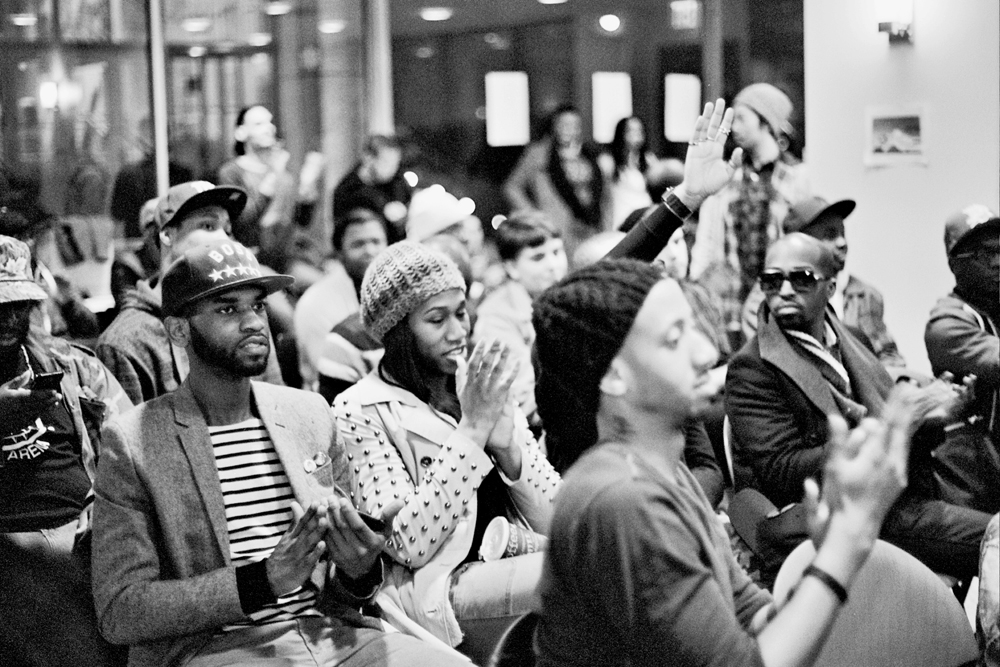
Ballroom Town Hall Meeting
Various Artists
Open community meeting to discuss some of the prevalent concerns impacting the ballroom community.
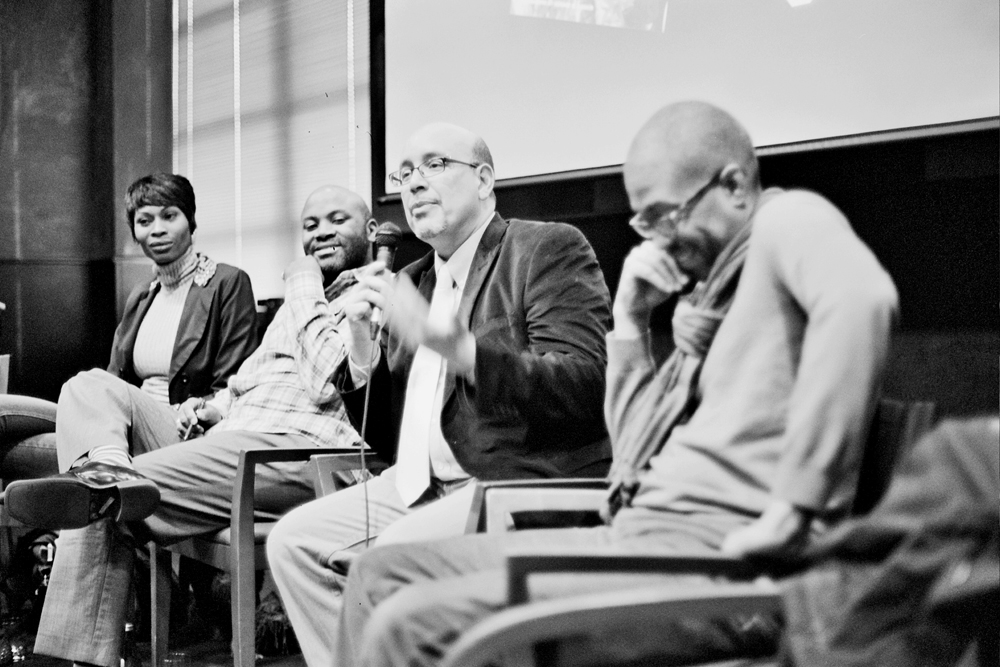
Literary Reflections of Ballroom
Various Artists
A celebration of the release of four books written by members of, and focused on about the House and Ballroom scene.
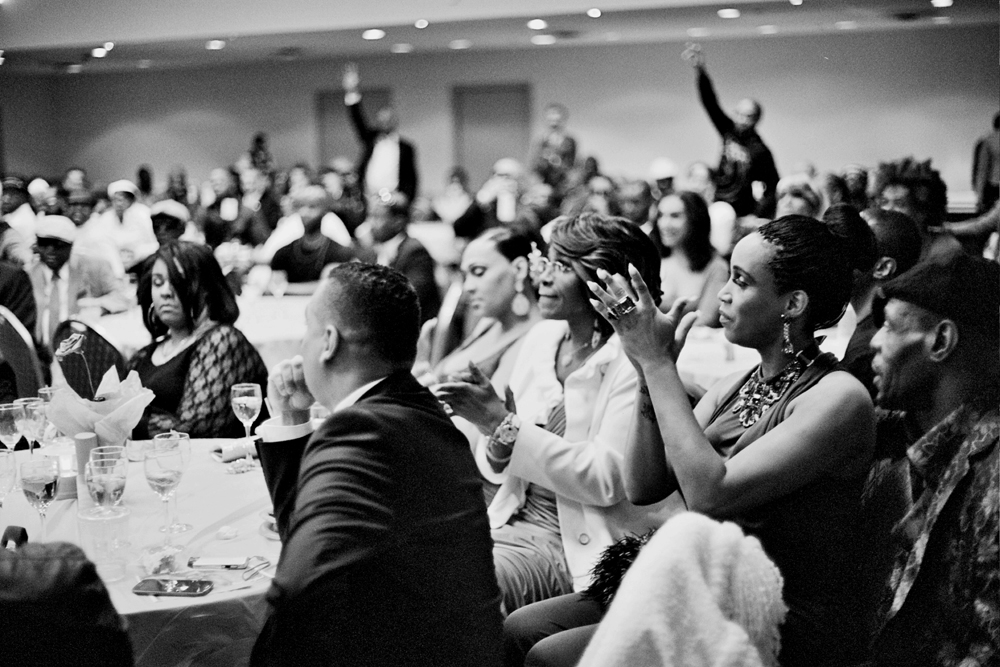
Icon’s Lunch
Various Artists
This event honoured those individuals who achieved the status of Icon during the period of 1986-1990.

Respect the Runway: The Red Carpet to Mastery
Various Artists
Organised by Twiggy Pucci Garcon and Pony Zion, The Masters Ball focuses on the work of 50 individuals designated within the scene as ‘masters’ in their respective performance categories, which include Vogue, Runway, and Face.
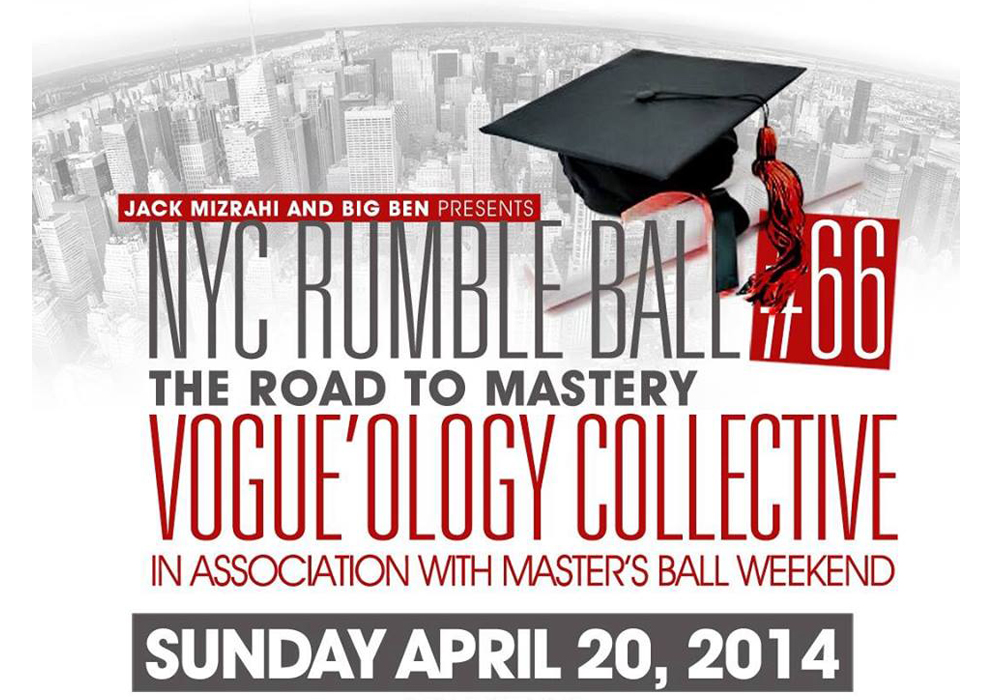
The Road to Mastery Rumble Ball
Various Artists
This mini, late-night ball will include categories inspired by the events earlier in the weekend.